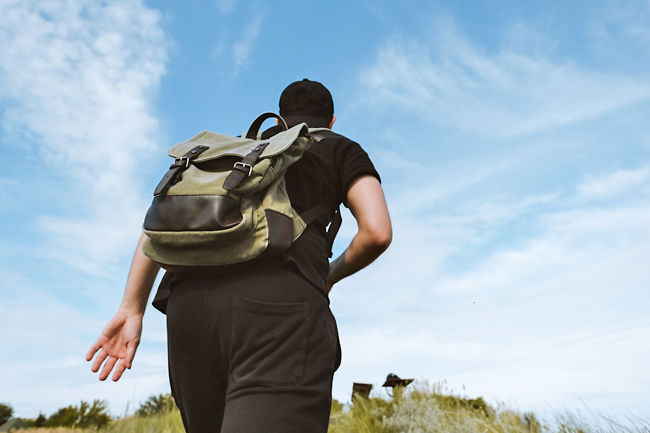As someone still on the fitness journey, my body’s very much a work in progress.
From yoga and calisthenics to regular jogging and the occasional wild trail run, I’m constantly on the lookout for ways to boost strength and aid weight loss without losing the fun of varied workouts.
My simplest yet most consistent form of exercise? Walking.
Over time, I’ve steadily raised my daily step count to a healthy eight to ten thousand. But let’s be real, hitting those numbers isn’t always easy – especially with a busy schedule. And squeezing in brisk walks to burn more calories isn’t always realistic.
So, what if you could up the intensity of your walk without adding extra time? That’s where rucking comes in.
Rucking, in its simplest form, is walking with a weighted rucksack – a method with military roots, originally used to build endurance and strength.
I unknowingly dipped my toes in rucking years ago. During my hiking and trail-running days, I’d bring a backpack filled with snacks and drinks.
Eventually, I’d add extra weight, sometimes in the form of three 1.5-litre water bottles. Little did I know, I was already rucking!
These days, rucking has evolved. While a basic rucksack works perfectly well, the fitness market now offers weighted vests, ranging from standard shoulder vests to options that look like full-on Kevlar gear.
But whether you choose a backpack or a vest, the idea remains simple: carry weight to make your walk more challenging.



THE HEALTH BENEFITS OF RUCKING
So, what makes rucking so effective? First and foremost, it’s low-impact. Unlike running or other high-intensity workouts, rucking doesn’t put as much strain on your joints.
The added weight increases the workout’s intensity without the harsh impact, making it suitable for a wide range of fitness levels.
ENHANCED CARDIOVASCULAR HEALTH
Rucking is essentially a high-intensity walking workout, which can improve cardiovascular fitness. Studies have shown that even moderate amounts of physical activity, like brisk walking with weight, can help reduce the risk of heart disease by lowering blood pressure and improving cholesterol levels.
With rucking, the added weight forces your heart to work harder, boosting endurance and cardio health.
STRENGTH BUILDING
By adding weight, rucking engages not only your leg muscles but also your core, back, and shoulders, helping build strength.
A study from the Journal of Strength and Conditioning Research highlights the benefits of carrying moderate loads, which can improve muscle endurance and core stability over time.
And since the weight is spread across your torso, it promotes a more balanced strength-building routine compared to lifting weights in isolation.
BONE DENSITY BOOST
Weight-bearing exercises like rucking help promote bone health by increasing bone density.
Studies published in the Journal of Bone and Mineral Research reveal that carrying weight can stimulate bone-building cells, leading to stronger bones over time.
This makes rucking an excellent exercise for improving bone density and reducing the risk of osteoporosis.
CALORIE BURN AND WEIGHT LOSS
One of the biggest perks of rucking is its calorie-burning potential.
Walking with added weight significantly boosts the number of calories burned – sometimes as much as double compared to regular walking. In turn, this increase supports weight loss.
According to fitness research, rucking can burn up to 40 per cent more calories than a standard walk, making it a time-efficient option for those looking to shed extra pounds.
GETTING STARTED WITH RUCKING
One of the best parts about rucking is its accessibility – there’s no need for expensive equipment or a gym membership.
A basic backpack with a few bottles of water or small dumbbells is all you need.
For beginners, start with around 10 per cent of your body weight to avoid strain and work up from there as your strength builds.
Aim for two to three rucking sessions per week, adjusting the distance and weight gradually.
Whether you’re hiking through trails, striding through the city, or taking a quiet morning walk, rucking is a versatile addition to any fitness routine.
Give it a try and you might just find yourself hooked on this simple, powerful workout that builds both body and mind. – Wardi Wasil




